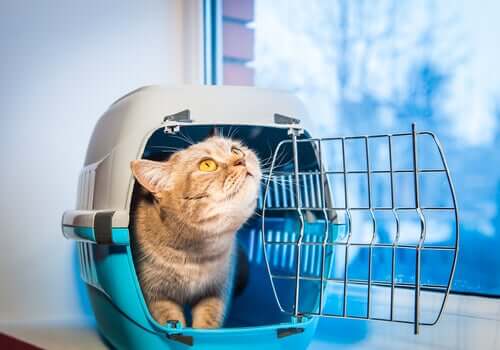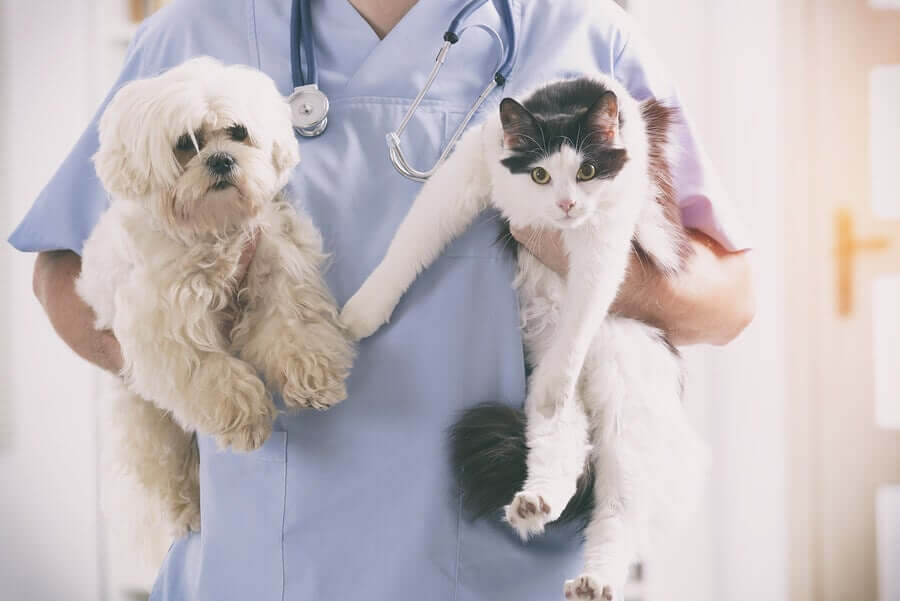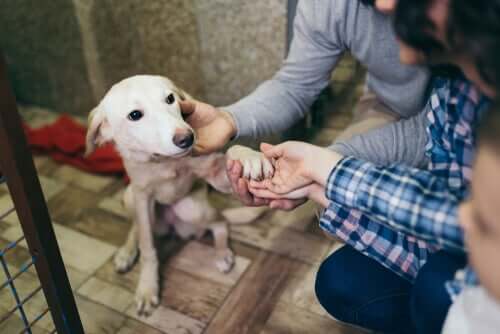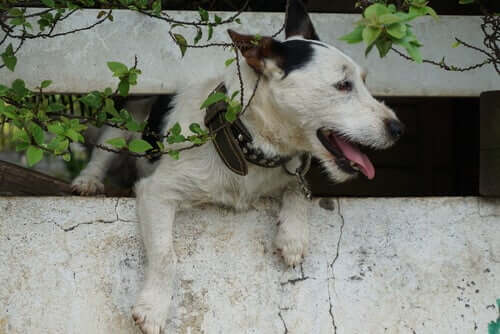7 Things to Consider When Rescuing a Cat or Dog

The stray animal population is a sad reality of our times. And, unfortunately, the number of abandoned animals is still increasing. At some point, all of us will come across an animal that needs immediate help. When the time comes, it’s important to know some key points for rescuing a cat or dog.
7 key tips when rescuing a cat or dog
The first thing to remember is that an animal rescue will never be a 100% predictable experience. Each animal has its own personality and can react in different ways to attempts to handle them. It’s also important to consider that the cat or dog could be in pain or have had bad experiences with people.
Below, we’ve summarized seven things that everyone should consider when rescuing a cat or dog.
1. Keep calm and be patient
Since no rescue is a predictable experience, it’s important to remain calm so as not to make the situation more stressful. The cat or dog will most likely be afraid of approaching you, so you’ll need to be patient.
The best thing to do is to entice the animal with food or treats. Keep trying this until they gradually gain the confidence to get closer. But, if the animal is weak, you’ll need to approach them slower, avoid making fast or abrupt movements and keep your tone of voice calm.
2. Get or improvise a carrier
Once the cat or dog has gained some confidence, it’s time to get them out of their unhygienic surroundings. To do this, it’s best to have a carrier or cage to transport them safely.

If you don’t have a carrier to hand at that exact moment, you could use a cardboard box or some other container that can support the animal’s weight. If things are more urgent, you could simply wrap the animal in a towel, blanket or item of clothing to get them to the vet quickly.
Remember, the animal’s life could depend on you acting quickly and there won’t always be time to look for a box or cage. The important thing is to act and get them out of any environment that poses a risk to their well-being.
3. Take them to the vet as soon as possible
On the streets, animals have to deal with dirt, pathogenic microorganisms, fights, contaminated food, and other health risks. Therefore, when rescuing a cat or dog that has been abandoned it’s essential to take them to the vet as soon as possible.

If possible, it’s best to take the animal to the vet straight after rescuing them. As well as examining them and having some tests done, the vet will give you advice about vaccinations and deworming.
4. A provisional home
The rescued animal will be weak and exhausted, so they’ll need rest and food to recover their strength and energy. It’s more practical and sensible for the rescuer to take the animal in themselves since they know the animal’s situation best.

If it’s not possible for you to keep the cat or dog, you’ll need to find a temporary home. Try asking your friends, posting on social media (there are groups dedicated to animal rescue), or going directly to an animal shelter.
5. Give them food and water
As well as preparing a bed for them, you’ll also need to provide them with food and water. If you don’t have any pet food to hand, you can prepare a homemade recipe using rice, carrots, and chicken or beef, for example.
It might take a while for the animal to start eating because they’re in a completely unfamiliar environment. You shouldn’t force them to eat. Wait for them to adapt to their surroundings and feel safe enough to eat.
6. Find out if the cat or dog has an owner
When rescuing a cat or dog, it’s important to remember that they might be lost not abandoned. Any animal is capable of escaping from their home and getting lost and eventually end up wandering the streets.

Before you decide whether to keep the animal or put them up for adoption, try to find the owners. If the animal is lost, their family will surely miss them and be looking for them.
7. Find a responsible owner
If the rescued cat or dog doesn’t have a family, you’ll need to find them a new home. If you decide to keep them yourself, you’ll need to prepare your house so that it’s appropriate for their physical and mental development.
On the other hand, if you decide to put the animal up for adoption, remember to choose a responsible owner who will take good care of them. You could also go to a shelter or rescue center for help in finding a family that will give them the care and attention they deserve.
All cited sources were thoroughly reviewed by our team to ensure their quality, reliability, currency, and validity. The bibliography of this article was considered reliable and of academic or scientific accuracy.
- CENDÓN PANADÉS, MARTA, HOLM, ANNA. 2011. Abandono de animales de compañía. Extraído de: https://ddd.uab.cat/pub/trerecpro/2011/85680/abaanicom.pdf
- BOE. Legislación Comunidad de Madrid. 2016. Ley de Protección de animales de compañía. Extraído de: https://www.boe.es/buscar/pdf/2016/BOE-A-2016-11097-consolidado.pdf
This text is provided for informational purposes only and does not replace consultation with a professional. If in doubt, consult your specialist.